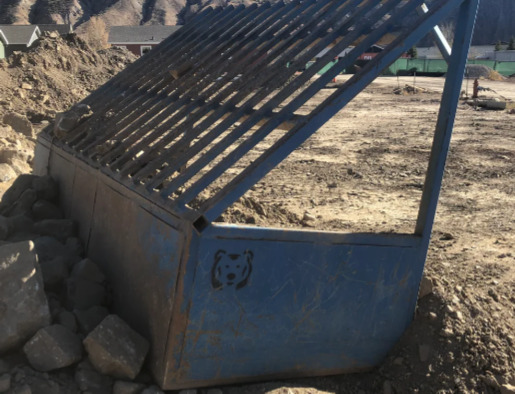Introduce your team by providing an overview of what they do, when they joined, and how their expertise shapes your brand.
Don't wanna be here? Send us removal request.
Text
Accelerate Your Rock Screening Process: Proven Strategies for Faster, More Efficient Results

Efficient rock screening is vital in mining, construction, and aggregate production. When done right, it saves time, cuts costs, and keeps projects on schedule. But when the process slows down, everything stalls. You need methods that speed up screening without sacrificing quality. This guide shares proven ways to make your rock screening faster and smarter.
The Fundamentals of Rock Screening Efficiency
Understanding the Screening Process
Rock screening separates materials by size using a vibrating or rotating screen. This step is crucial for sorting rocks, gravel, and other materials. Slow screens create delays, especially when handling large volumes. Common problems include clogged screens, uneven flow, and equipment downtime.
Key Factors Influencing Screening Speed
Several things affect how fast you can screen rocks. First is the material itself: size, moisture, and hardness matter. Wet or sticky rocks are harder to move quickly. Next is the equipment — whether it’s a simple deck or a high-capacity trommel — impacts throughput. Lastly, operational habits like feeder speed and workflow planning influence overall speed.
Upgrading and Optimizing Screening Equipment
Choosing the Right Screeners for Faster Results
Picking the right equipment makes all the difference. For smaller, fine materials, high-frequency screens improve separation speed. For larger, rougher rocks, trommel screens move material smoothly and quickly. Modular systems are also beneficial because they can be scaled to fit different project needs.
Implementing Advanced Technology
Automation tools are game-changers. Smart controls adjust screen angles and vibration intensity based on real-time data. Monitoring systems track performance and alert operators to issues before downtime occurs. These tech upgrades keep screens running at peak efficiency.
Maintenance and Wear Part Management
Regular checkups reduce unexpected breakdowns. Changing wear parts before they fully wear out ensures uninterrupted flow. Use durable parts made from high-quality materials to handle abrasive rocks. Well-maintained equipment stays productive longer, saving time and money.
Improving Workflow and Operational Practices
Optimizing Material Feed and Distribution
Consistent feeding prevents bottlenecks. Use feeders and conveyors to deliver material evenly across the screen surface. Avoid overloading, which can cause clogging, or underfeeding, which wastes capacity. Proper distribution speeds up the screening process.
Setting Up for Efficient Screening
Arrange your plant layout to reduce unneeded handling. Place equipment close enough to minimize material movement. Clear pathways and well-organized workstations keep things flowing smoothly. Reduce reprocessing caused by misplacement or unnecessary reloads.
Training and Workforce Optimization
Skilled operators get better results. Train staff on adjusting machine settings quickly. Use standardized procedures for routine tasks. When workers know how to troubleshoot and fine-tune equipment, screening speeds up significantly.
Scaling and Process Automation
Increasing Capacity with Modular Screening Solutions
Modular systems allow easy expansion. Adding extra screens or conveyors boosts total capacity fast. This flexibility is perfect for projects that need to grow or fluctuate with demand. For example, a quarry can add units during busy seasons without overhauling the whole plant.
Automating the Screening Workflow
Automation reduces manual work and human error. Sensors detect material flow and adjust settings automatically. Robotic loaders and conveyor belts move materials efficiently, improving throughput. These systems also cut labor costs and speeds up the entire process.
Data-Driven Process Optimization
Using data helps identify slow points in your workflow. Analytics show patterns and can suggest improvements. Regularly tracking performance metrics helps you make smarter decisions and continually boost screening speed.
Implementing Quality Control for Faster Turnaround
Balancing Speed with Product Quality
Pushing for speed should not hurt quality. Use checkpoints to prevent overscreening or leaving chunks unprocessed. Maintaining a good balance ensures your product remains consistent and reduces rework, saving time overall.
Sample Testing and Feedback Loops
Quick testing of samples keeps standards high. Spot-checks and feedback allow you to adjust on the fly. If a batch is too coarse, fine-tune your setup immediately. This keeps your process moving fast and your quality intact.
Conclusion
Speeding up rock screening isn’t about rushing — it’s about working smarter. Upgrade your equipment, improve workflows, use automation, and focus on quality control. Combining these strategies will boost your productivity and keep your projects on track. Continually review and refine your process, and you'll see faster results and better outcomes every time.
0 notes
Text
0 notes
Text

At Bear Iron Works, we build tough, reliable gear for hardworking folks—like rock screens and other jobsite essentials. We’re all about simple, solid designs that get the job done without the hassle. Made to last, easy to use, and built with pride right here in the USA.
1 note
·
View note